
Arrow 3 Interceptor Missile System: The Forefront of Modern Defense Strategies
Witness audit and compliance professionals, government officials, and industry leaders as they share insights into the critical and audit-focused Challenges and Best Practices to Achieving Audit Readiness in the DoD Forum by clicking here. Or follow this link to to be come a member of the Potomac Officers Club to be closer to the radar!
The Arrow 3 interceptor missile system is a game-changing technology that is revolutionizing the landscape of defense mechanisms. Founded on the principles of advanced radar detection and lightning-fast response times, it stands as an impregnable defense shield against evolving security threats.
In an era where security concerns loom large, this cutting-edge system is a beacon of hope, ensuring the safeguarding of nations and their citizens. It offers a sophisticated solution that’s a step ahead of potential breaches. It’s ability to swiftly neutralize incoming threats marks a pivotal advancement and elevates the standards of protection for global territories.
So, as nations strive to fortify their national security infrastructure, the Arrow 3 interceptor missile system emerges as the vanguard defense technology. It clearly sets unmatched precedents for safeguarding peace and sovereignty since its inception.
What is the Arrow 3 Interceptor Missile System and how does it work?

The Arrow 3 interceptor is part of a series of the Arrow Weapon System (AWS), the world’s first national, operational, and stand-alone Anti Tactical Ballistic Missiles (ATBM) defense system.
This modular air defense system is based on its unique and effective predecessor, the Arrow 2, that can detect, track, intercept, and destroy incoming tactical ballistic missiles carrying various warheads. It is dedicated to protect strategic assets and populated areas.
Not only that, it is considered as an exoatmospheric defense system, it seamlessly integrates into the AWS by complementing the blocks of the Arrow 2 interceptor. Hence, enabling upper-level multi-engagement opportunities.
This system was declared operational in January of 1977.
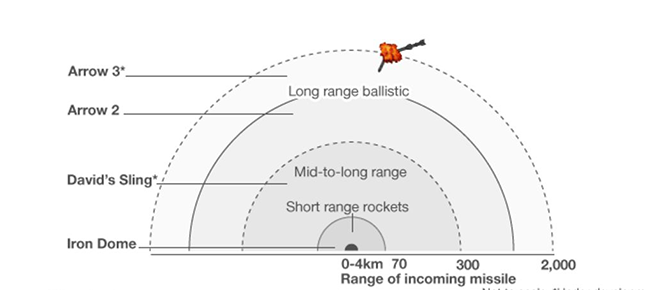
Operating at greater speeds, range, and altitude compared to the Arrow 2, it can easily intercept missiles within its space flight-range trajectory. It is designed to impede and smash longer-range threats, especially the ones considered having weapons of mass destruction.
The Arrow 3 interceptor missile system was developed and funded by both Israel and the U.S., and built jointly by Israel Atmospheric Industries (IAI) and Boeing.
According to the Israeli Space Agency, it can double as an anti-satellite defense weapon, making Israel one of the few countries in the world that can shoot down satellites.
The Israeli Minister of Defense and the U.S. Missile Defense Agency act as overseers of the system. Along with the David’s Sling, Iron Dome, and Iron Beam, Arrow 3 completes the AWS, borne out of innovative minds.
Be a part of the elite professionals and learn about fresh insights on national security and government war initiatives by joining Potomac Officers Club now!
What are the key features and capabilities of the Arrow 3 interceptor missile system?
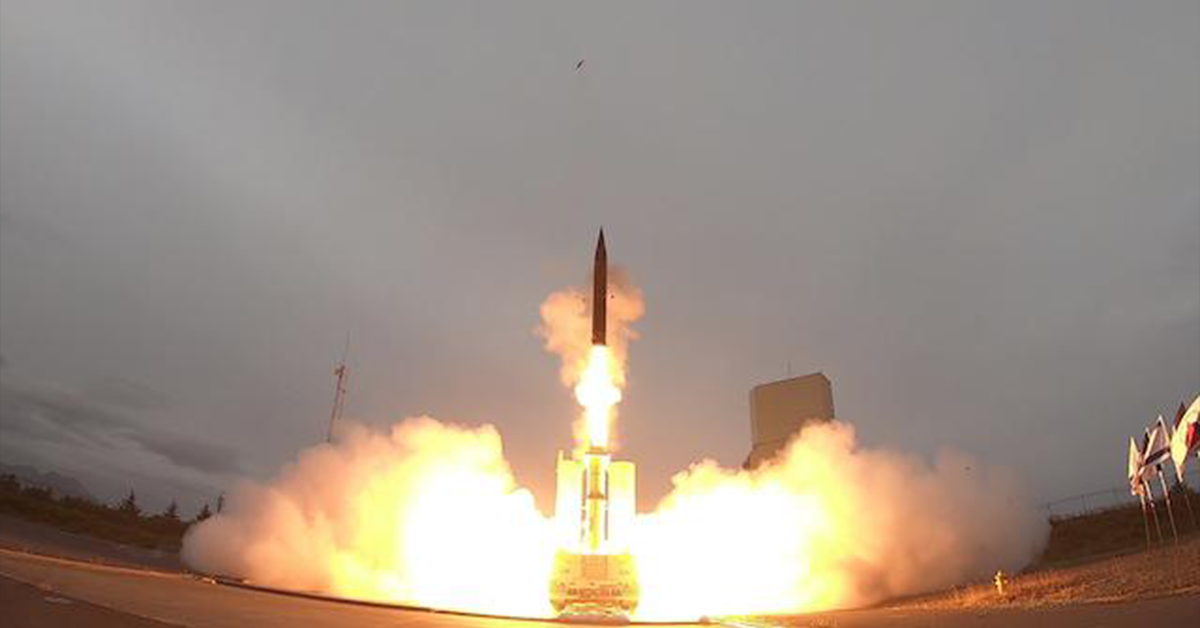
With its exceptional speed and precision, the Arrow 3 interceptor missile system embodies state-of-the art level of technology. Here is an overview of its characteristics.
Arrow 3 interceptor missile system: An Overview
The compact and innovative Arrow 3 is hypersonic, which travels five times the speed of sound. It protects a wider area within the range of 2,400 km or 1,500 mi. It is known for its high lethality against warheads and TBMs, and integrates seamlessly with the AWS battery system.
With its extraordinary maneuverability and divert capacity, its missile launches vertically, following a point of interception with over 100 km or 62 mi flight ceiling. The Arrow 3 interceptor missile system works from hit-to-kill to destroy mode which activates once an enemy warhead is identified.
Following up next are essential details you don’t want to miss.
Launcher
- multi-directional coverage
- mobile, easy-to-transport able to launch vertically from sealed canisters
- each launcher holds six canisters, accommodates Arrow 2 and Arrow 3 interceptor missiles
- missiles are held by 21” vertical launch tubes
- fast reaction times, engages multiple ballistic missiles at any given time
Radar and guidance
The Arrow 3 interceptor missile system employs the IAI subsidiary Elta’s Super Green Pine, a radar system serving as an early warning and fire control device. Operating in L-band, it provides longer-range acquisition plus tracking and multi-target acquisition features.
The radar has electronic counter-countermeasures (ECCM) that works to counter jamming issues and sensor outage. Its high-res electro-optical sensor detects the target so that the kill vehicle can hit and destroy hostile incoming warheads.
Propulsion and performance
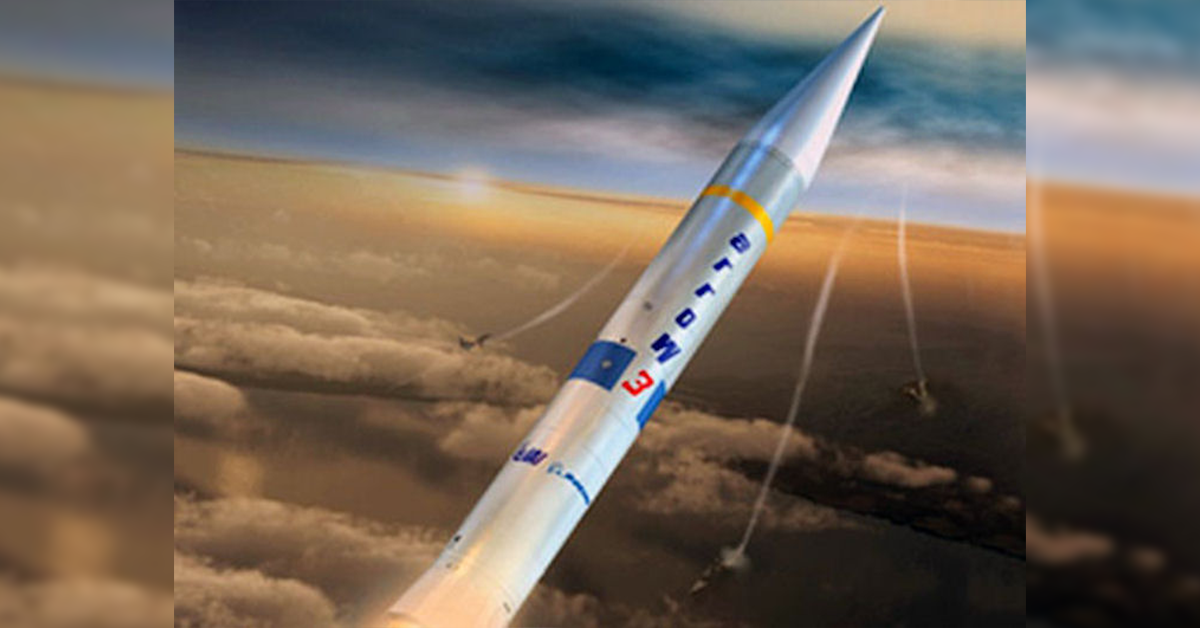
The system has dual solid propulsion stages which includes a booster and a sustainer. It can travel up to a range of 2,400 km, intercepting threats as high as 100 kms.
Join the 2024 Space Summit hosted by Potomac Officers Club to learn about new space environment-focused weapons currently undergoing development by clicking here.
Battle management center
The Arrow 3 interceptor has Citron Tree for command and battle management, control, and communication. It has an intelligence and fire control center that serves as a command post for data processing, mission control, and threat assessment.
The Citron Tree system also provides launch point estimation, early warning, and prediction of accurate impact points. It has manual and fully automatic modes and a man-machine interface. Hence, managing multiple threats all at once.
Launch control center
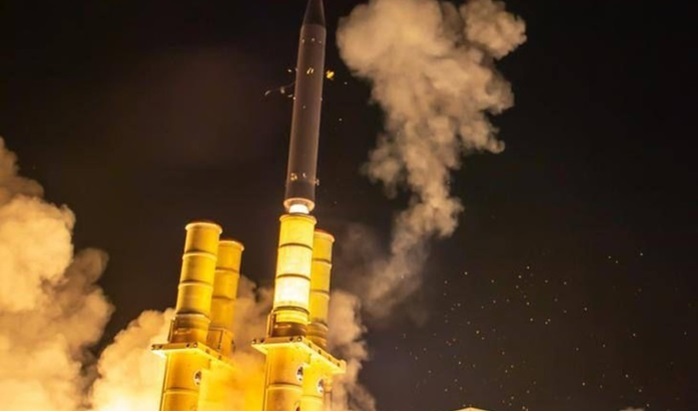
Found at the launch site is the Hazelnut Tree, the launch control center (LCC) that controls all missile launchers. It acts as a platform between the fire control center and the launchers.
The LCC has a full-system redundancy (maximum system availability) and a self-operating battle management process. With safety mechanisms that act to avert accidental missile launches. It is also the LCC that takes charge of maintenance and diagnosis within the system.
Recent Arrow 3 interceptor missile system developments
On October 31, 2023, A long-range ballistic missile launched towards Israel by the Houthis forces in Yemen was precisely intercepted by an Arrow 3 missile. This incident marks the first operational use of the efficient defense system during a war. It is also the first recorded interception of a ground-to-ground ballistic missile.
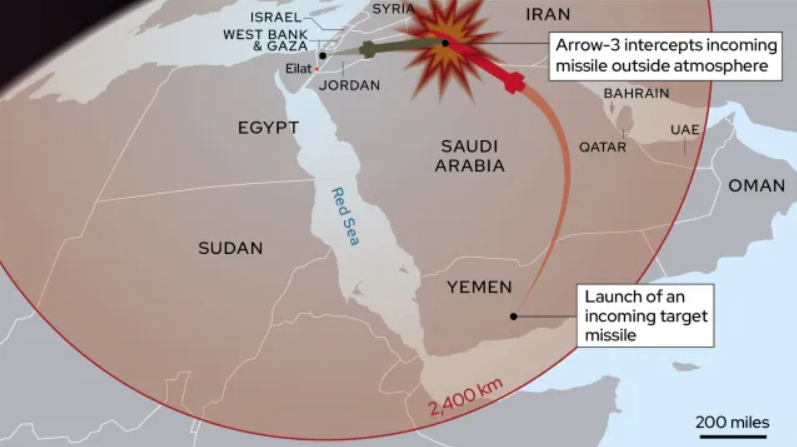
And because the interception happened in the Earth’s exosphere, it is now considered as the first ever space warfare in the history of mankind.
Later on November 9th, another Houthi launched missile from the direction of Yemen was intercepted by Arrow 3. The missile was supposed to hit Eilat, Israel’s southernmost city.
The Future of the Arrow missile defense series
Apart from the Arrow 3 interceptor missile system, the U.S. and the Israeli governments jointly began the development of the Arrow-4 including next-generation interceptors that will replace the Arrow 2 over the next ten years of its service.
“The Arrow weapon system, which was one of the first in the world to intercept ballistic missiles, will be upgraded with a significant capability, produced by Israel Aerospace Industries, in the form of the Arrow-4 interceptor.
The interceptor will be the most advanced of its kind in the world and will provide a new layer of defense to the State of Israel and its citizens,” said Jacob Galifat, IAI’s MLM Division general manager.

Category: Articles




